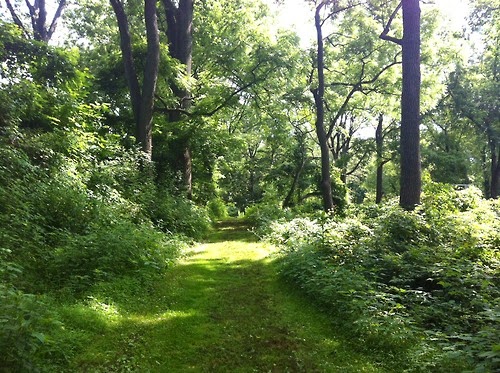But a realistic or contemporary novel can have a specific sense of place. "World-building" is associated with fantasy, but every novel builds its own world, whether it's one that's familiar or foreign, a meticulous recreation or the author's invention.
When I wrote Deadwood, I wanted to create a specificity of place -- the outer Philadelphia neighborhoods of Mount Airy and Andorra, the inner suburbs of the Mainline and Delaware County, the leafy urban parks where I've spent. I decided to do this because it's too common to think of some places as non-places -- places without regional character, places where nothing happens. But there are stories everywhere if you find them or write them.
Setting is specificity of place, accent, culture, geography, history, and architecture. In Deadwood, aspects of setting were almost a character -- Deadwood Park, the geographical and emotional center of the story. I had a very clear map in my head about where everything was. I didn't draw it out, but next time, maybe I will.
Top 5 places in Deadwood that are based on places in real life.
Brynwood Valley Park is based on few places: Wynnewood Valley Park in Wynnewood, Powder Mill Park, Haverford Heritage Trail, and Cobbs Creek in Haverford Township, and Wissahickon Valley Park and Carpenter’s Woods in Philadelphia.
I love gatehouses, and I based Jenna Blitzer’s house on a couple near me. Most of them are right near the main roads, but the estate that they guarded are gone – knocked down for development.
I based the high school/municipal complex on the layout of Upper Dublin, where I went to high school. The district rebuilt the school a few years ago, but I was describing the old layout. I walked around the new school about a month ago, and it was such a strange feeling. I felt like I could see the ghost of the old school in the new one.
The geography of Hannah’s neighborhood is based on Manayunk, a neighborhood in Philadelphia with rowhouses and twins on super steep streets. Manayunk was originally a milltown, like Lower Brynwood.
Does a sense of place matter in the stories you write? Do you try to be universal or specfic when it comes to regionality? Do you prefer to write the exotic or the everyday?
And for another perspective, read this excellent guest post by PK Herzo:
Settings that Pop
About Kell Andrews: Kell Andrews writes picture books and middle grade novels. Deadwood, her middle-grade contemporary fantasy about a cursed tree, is out now from Spencer Hill Middle Grade.





I try to infuse all my work with a strong sense of place and in fact, setting has inspired my historical writing. I look for it in my reading, too, and am disappointed when a story that could be rich reads like "anywhere." Rather than long passages of description, I try to find the "telling details" whether it's the light or scent or atmosphere.
ReplyDeleteI look at setting as almost another character--worthy of its own complex buildup and reveal.
ReplyDeleteThanks for this...exactly what I am working on. Well, always what I am working on!
ReplyDelete